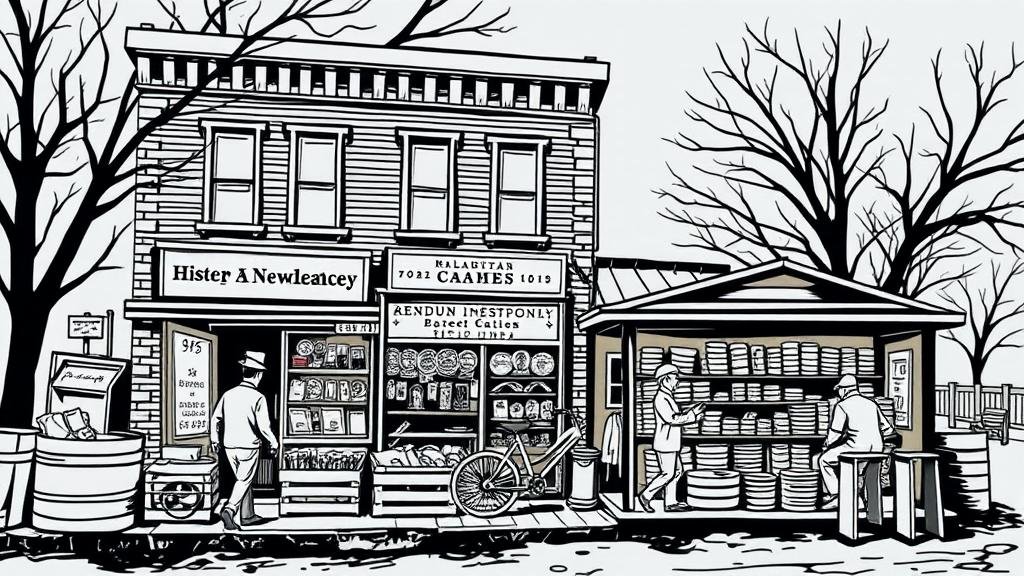Unearthing Hidden Caches of Currency in Historic Mercantile Sites
Unearthing Hidden Caches of Currency in Historic Mercantile Sites
Exploring historic mercantile sites provides a unique glimpse into the past, often revealing not only artifacts but also hidden caches of currency. These discoveries can illuminate the economic practices, cultural exchanges, and daily lives of those who inhabited these areas. This article delves into the methods employed in excavating these historical treasures, highlights notable case studies, and underscores the significance of these finds in understanding our economic heritage.
The Significance of Historic Mercantile Sites
Historic mercantile sites serve as archeological gold mines, offering insights into trade practices, currency usage, and economies of scale that defined their eras. e locations are often found in urban centers that once functioned as bustling hubs of commerce. The most prominent examples include ports, colonial trading posts, and market towns where merchants conducted business.
According to the National Park Service, mercantile sites provide invaluable data for understanding pivotal points in history, especially in the context of colonialism and globalization. In many instances, the analysis of currency found at these sites sheds light on economic exchanges between different cultures and nations.
Detecting Hidden Caches
Unearthing hidden caches of currency in mercantile sites involves systematic archaeological techniques. most common methods include:
- Magnetometry: This geophysical survey technique uses magnetic fields to detect anomalies in the soil, which may indicate buried metal.
- Ground Penetrating Radar (GPR): GPR employs radar pulses to image the subsurface, highlighting where currency or other valuables might be located.
- Excavation Techniques: Systematic dig methods, including stratigraphic excavation, allow archaeologists to carefully unearth soil layers while preserving the contextual integrity of finds.
Each method offers distinct advantages and can be integrated for more comprehensive investigations. For example, the combination of GPR and excavation led to the discovery of buried coins at the historic site of a 17th-century trading post in Virginia, underscoring effective synergy between detection technologies and manual excavation.
Case Studies of Currency Discoveries
Several notable examples illustrate the importance and excitement of finding caches of currency in historic mercantile sites:
- The Spanish Treasure Fleet: In 1715, a fleet carrying gold and silver coins sank off the coast of Florida. In the 20th century, archaeologists, marine treasure hunters, and historians have worked collaboratively, discovering thousands of gold coins. This project illustrated the intricate connections between piracy and the legitimate maritime trade of the era.
- Philadelphia’s Market Street: During excavations for a new building, workers unearthed more than 1,000 coins dating back to the 18th century. Analysis of the coins provided insights into the citys thriving economy during the pre-Revolutionary War period.
- New Yorks Battery Park: Excavations in this historic area uncovered caches of 17th-century Dutch currency, which provided critical understanding of trade and economic practices in Colonial New York.
Implications for Economic History
The finds from historic mercantile sites contribute significantly to our understanding of economic history. The types of currency discovered–be they coins, notes, or trade tokens–serve as indicators of economic shifts, trade routes, and the socio-political landscape of the time. For example, the prevalence of Spanish dollars in the Americas exemplified the interconnectedness of colonial economies.
Also, analyzing the geographic distribution of these findings allows historians to trace trade networks and identify previously unknown market interactions. The large quantities of hoarded coins can also indicate economic instability or impending collapse, as seen in some Roman sites where currency hoarding was a response to the empires decline.
Challenges in Unearthing Currency
While uncovering hidden caches of currency is fascinating, it is fraught with challenges. Factors such as:
- Legal Restrictions: Many sites are protected under state and federal laws, which regulate excavations and ownership of discovered artifacts.
- Contamination: Environmental factors may alter the condition of coins, making preservation and analysis more difficult.
- Ethical Considerations: Balancing historical research with the moral implications of excavation is vital. Local communities and their perspectives must be considered, ensuring respectful acknowledgment of heritage.
Conclusion and Takeaways
Unearthing hidden caches of currency in historic mercantile sites is a multifaceted endeavor that offers invaluable insights into our economic past. Through the use of advanced technology and careful archaeological methods, we are able to piece together the stories that coins can tell–about trade, culture, and even the implications of global commerce. As we continue to explore these sites, it becomes increasingly essential to embrace interdisciplinary collaboration among archaeologists, historians, and local communities for a holistic understanding of our shared heritage.
In summary, the exploration of historic mercantile sites brings forth both opportunities and challenges. As we uncover these fascinating pieces of history, it is essential to approach them with care, ensuring we honor the legacies they represent while learning from the past to inform present and future economic practices.



